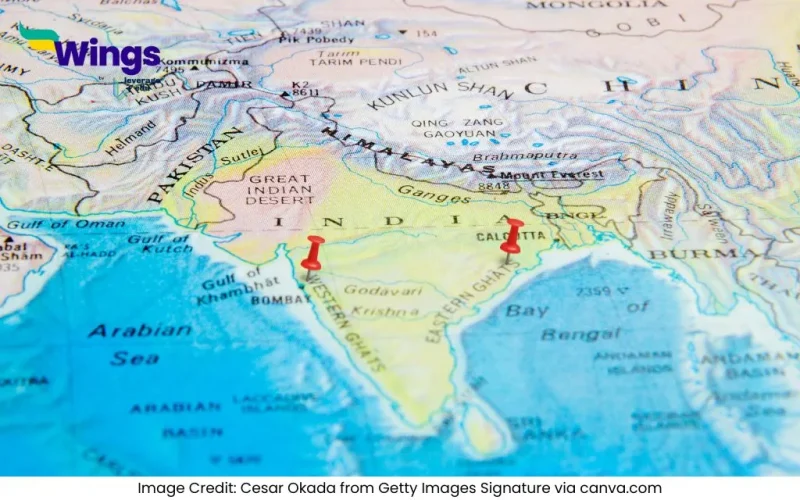Answer
Verified
The Western Ghats, running parallel to India’s western coast, are higher, more continuous, and receive heavy rainfall, fostering dense evergreen forests. Whereas, the Eastern Ghats, along the eastern coast, are lower, fragmented, and experience moderate rainfall, supporting deciduous vegetation. Keep reading to know how to differentiate between the Western and the Eastern Ghats.
Complete Answer:
Here is a table to differentiate between the Western and the Eastern Ghats
| Properties | Western Ghats | Eastern Ghats |
| Location | Located along the western coast of India, stretching from Gujarat to Kerala. | Located along the eastern coast of India, stretching from Odisha to Tamil Nadu. |
| States Covered | Gujarat, Maharashtra, Goa, Karnataka, Kerala, and Tamil Nadu. | Odisha, Andhra Pradesh, Telangana, Tamil Nadu, and parts of Karnataka. |
| Elevation | Higher in elevation, with an average height of 900-1600 meters. | Lower in elevation, with an average height of 600 meters. |
| Highest Peaks | Anaimudi (2695 m) | Arma Konda (1680 m) |
| Famous Hill Stations | Munnar, Ooty, Kodaikanal, and Mahabaleshwar. | Araku Valley and Lambasingi. |
| Topography | A continuous chain of mountains with very few passes, like the Palghat Gap. | Discontinuous, broken into smaller hill ranges with large gaps. |
| Climate | Cool and wet due to heavy rainfall, especially on the windward side. | Warm and semi-arid with moderate rainfall. |
| Rainfall | Receives heavy rainfall due to the southwest monsoon winds. This supports lush greenery and rivers. | Receives moderate rainfall as it is less exposed to monsoon winds. |
| Vegetation | Known for dense evergreen forests and rich biodiversity, including several endemic species. Dense tropical evergreen forests, deciduous forests, and grasslands. | Dominated by dry deciduous forests and scrub vegetation due to lower rainfall. Deciduous forests, scrub vegetation, and patches of evergreen forests. |
| Soil Type | Laterite soil and red soil, which ideal for plantation crops. | Red soil, black soil, and lateritic soil. |
| Crops Grown | Tea, coffee, spices (pepper, cardamom), rubber, and cashew. | Rice, millets, pulses, and groundnuts. |
| Wildlife | Rich in biodiversity with animals like tigers, elephants, lion-tailed macaques, and Nilgiri tahr. | Wildlife includes tigers, elephants, leopards, and blackbucks. |
| Rivers | Many major rivers like Godavari, Krishna, and Kaveri originate here and flow eastward. | Rivers like Mahanadi, Godavari, Krishna, and Kaveri cut through the Eastern Ghats as they flow to the Bay of Bengal. |
| UNESCO Status | Recognised as a UNESCO World Heritage Site for biodiversity. | Not recognised as a UNESCO site but still important for ecological balance. |
| Type of Tourism | Famous for eco-tourism, trekking, and hill station retreats. | Known for historical sites, tribal culture, and agricultural tourism. |
| Did You Know? The Western Ghats are often called the “Sahyadri Hills,” and the Eastern Ghats are sometimes referred to as the “Palkonda and Nallamala Hills.” |
Common Doubts:
 60,000+ students trusted us with their dreams. Take the first step today!
60,000+ students trusted us with their dreams. Take the first step today!


 One app for all your study abroad needs
One app for all your study abroad needs










